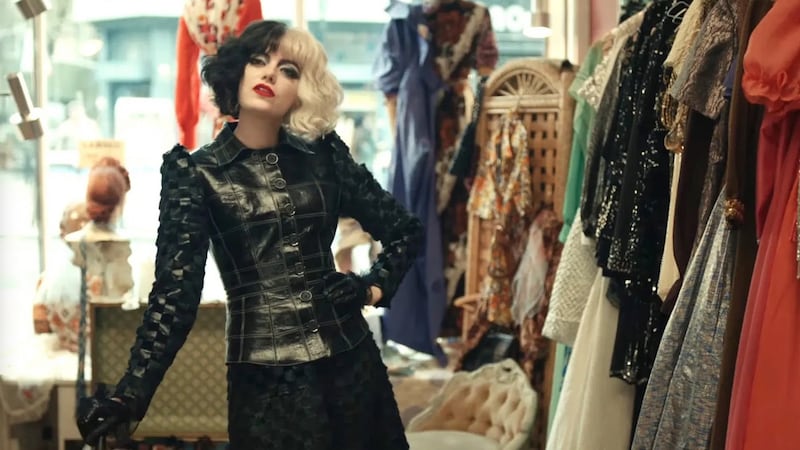Ah, here. Is that a tom-tom? Is that the yelp I think it is? In these spoiler-phobic times, we are probably not allowed to reveal the song played at the close of the latest mega-villain origin story, but let us just say we would quicker have forgiven red buses crossing Tower Bridge to London Calling. It is that thumpingly, embarrassingly obvious (woo, woo!).
Mind you, they may have had no choice. Perhaps there was nothing else left. By the time this absurdly overlong, tolerably entertaining romp creaks to a halt, it feels as if every piece of recorded music released between the Profumo scandal and Princess Diana’s wedding has been given an airing. Poor old Cruella de Vil — for it is she — can scarcely clean her teeth without snippets of Deep Purple or The Ohio Players beating time to the movement of her brush.
Which is not to suggest such sequences aren’t fun. Any ageing music purist fooled by the publicised notion that Cruella is a tribute to punk (or “punk rawk” perhaps) will be disillusioned long before the appearance of such long-ago cancelled non-persons as ELO or Supertramp. Even the bores may, however, enjoy how the ochre action rattles along to the nut-brown beats.
Disney is not true to the times. No version of punk can make sense in a 1970s so cleansed of litter, poverty, unemployment and dissent. But Disney is true to itself. There is, in this London, more of Mary Poppins than of the Angry Brigade. And that's fine. Just-about family friendly, reasonably funny throughout, Craig Gillespie's film, profiting greatly from Jenny Beavan's fabulous costumes, continues the Mouse House's tradition of restructuring historical ambience — Mary's 1910s for instance — as easily digestible wonderland. There is corporate genius there.
Sadly, those sleek production values do little to crack the intractable dilemma the studio has set for itself. Following on from One Hundred and One Dalmatians, a 1961 animated delight, and the dire 1996 live-action remake (almost certainly now reevaluated as a classic by people who were then children), the picture seeks to make a tween-friendly, feminist girl-boss of a puppy-killing psychopath.

Emma Stone, charismatic despite a shaky accent, is playing something more empathetic than an anti-hero. She's fun. She's charming. Her greatest sins are at the level of mischievous performance art. Though some controversy gathered around the psychological undergrowth in Joker, that film never tried to pretend that its protagonist was anything other than a malevolent fiend.
Cruella plays like the result of an endless script conference that generated only partial answers to the questions being asked. Maybe she’s Batman. Let’s give her a similar trauma in the opening scenes. No, Cruella de Vil wasn’t using questionable methods for potentially justifiable ends. She was plain bad.
What about the medically dubious movie staple that is multiple personality disorder? We could play on that black-and-white hairdo to suggest that decent Estella (Great Expectations reference?), raised by nice Emily Beacham in modest circumstances, finds herself warring internally with the malign Cruella. But Cruella de Vil was Cruella de Vil all the time and we still have to flog the evil version as a "kick-ass" heroine. Nobody will be pumping their fist for wee Estella.
The least bad solution here is to give all the traditional Cruella moves to Emma Thompson as the consistently appalling Baroness. Around for the opening catastrophe, the powerful fashion designer becomes a presence in Estella/Cruella's later life when the young woman makes her first tentative steps in the rag trade. The Duchess is rude. She is catty. She is potentially murderous. Ring any bells? If the film and its protagonist had another name, reviews would still be referring to the Baroness as "a Cruella de Vil type".
Maybe it will all make sense for the sequel implicitly promised in the closing credits. The endless script meeting continues.
Woo, woo!
On Disney+ from May 28th.













